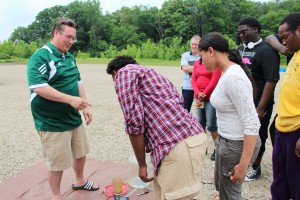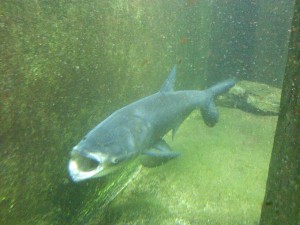The Invasion of the Great Lakes
by
Eco Youth Reporters Tyreshia Black, Antonio Reed, Jasmine Hunt at the reflecting pool at the University of Notre Dame. Photo by Kari Lydersen.
Editor’s Note: The following story was written by a student in our Eco Youth Reporters program, conducted in conjunction with award-winning journalist Kari Lydersen and Michigan State University’s Knight Center for Environmental Journalism. The Eco Youth Reporters program is generously funded by the McCormick Foundation:
By pulling out a single strand of hair, your DNA instantly becomes environmental DNA or eDNA and this concept may help us save the Great Lakes from the potential devastation of the Asian carp. I didn’t understand this until I met Chris Jerde at the University of Notre Dame on a trip with my journalism classmates.
Jerde’s current job is to extract eDNA from water samples to search for a trace of Asian carp but this process can be used for other things to in the near future. He demonstrated by filtering water through special filters that captured algae and other microorganisms, allowing the eDNA to collect in sterile containers for testing.
“The process we use now will help us find the location of the carp, and in the future this process will help us figure out multiple species of fish,” Jerde said. “How many there are, and where they’re located, which is way better than counting them.”
Categories: Homepage UYIJP


